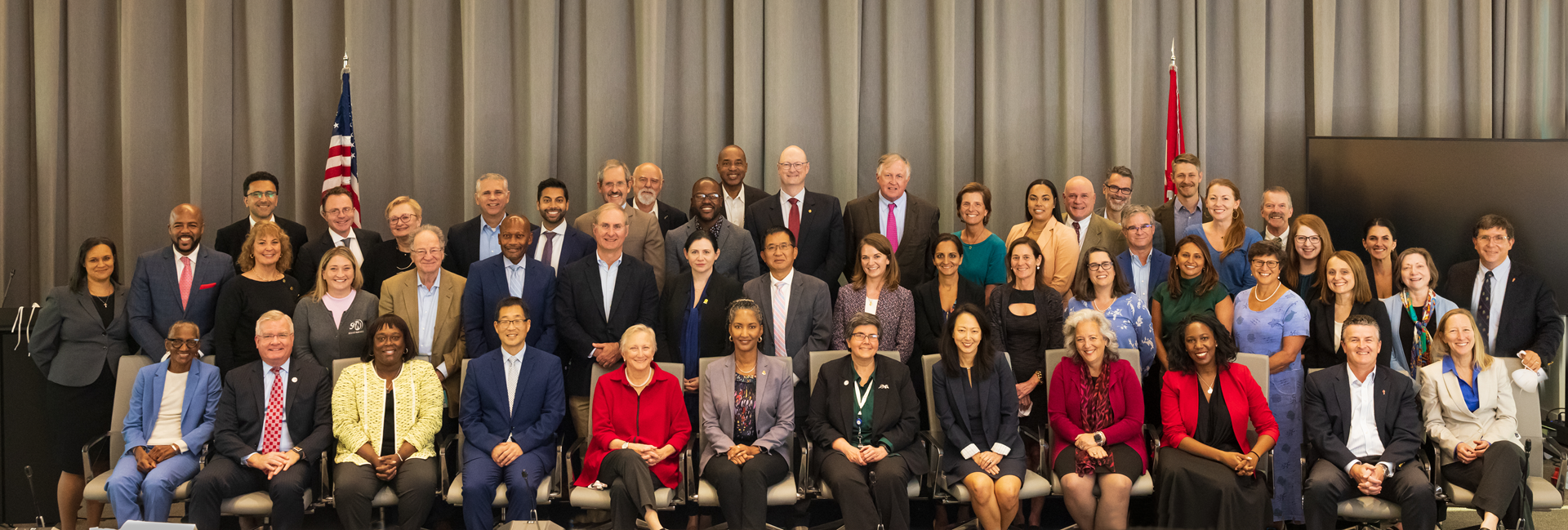In response to the public health crisis of firearm violence, professionals from 47 multidisciplinary medical societies and health organizations from across the country participated in a Medical Summit on Firearm Injury Prevention at ACS headquarters in Chicago September 10–11.
“This critical public health crisis requires that we all come together to find solutions to save lives and support our communities,” said ACS Executive Director and Chief Executive Officer Patricia L. Turner, MD, MBA, FACS. “With 47 medical and community organizations at the table, I know that we can develop a consensus-based approach that will lead to improved policies and robust engagement strategies that can positively impact communities across the nation.”
Summit organizer Eileen M. Bulger, MD, FACS, Medical Director of ACS Trauma Programs, concurred. “Now that we’ve concluded the second summit, it’s becoming even more clear that there are many things we can all agree on in terms of immediate, actionable items that can address firearm violence,” she said.
Cohosted by the ACS, American College of Physicians, American College of Emergency Physicians, American Academy of Pediatrics, and the Council of Medical Specialty Societies, this hybrid in-person and virtual meeting was the second such meeting aimed at developing firearm violence prevention recommendations. It built upon the first Medical Summit’s work from 2019, the results of which can be viewed in a Journal of the American College of Surgeons article.
The meeting provided an opportunity for an inclusive and collegial dialogue on identifying opportunities for the medical community to reach a consensus-based approach to firearm injury prevention, with a focus on understanding and addressing the root causes of firearm violence while advocating for bipartisan policy solutions to address the issue.
Broadly, topics discussed included:
- The public health approach to firearm violence in the US
- Recent and potential legislative approaches related to prevention
- Addressing violence through community engagement
- Using healthcare resources to influence the social determinants that contribute to violence
- How effective communication on firearm violence from the healthcare sector can influence policy work and community building
Some of the most significant work at the summit came from breakout discussions during each session, where participants worked together to educate one another on their areas of expertise and develop a set of initial recommendations that will drive the coalition’s future action.
“The summit has once again provided an excellent format for addressing firearm violence. The key remains approaching firearm injury and death as a medical and public health problem, not a political debate. It also provides a way for professional organizations to move beyond published statements to taking constructive actions as part of a coalition,” said Jeffrey Kerby, MD, FACS, Chair of the ACS Committee on Trauma. “The public health approach has been very effective in significantly reducing traffic injuries and deaths through the years. We know this approach can work with firearm violence too.”
The planning committee will compile and disseminate the recommendations and proceedings for participating organizations to further consider. Leaders at the summit also committed to a long-term working relationship (or coalition) and agreed to create an infrastructure for continued longitudinal collaboration so that effective firearm violence prevention education, resources, and policy solutions can be pursued.
Proceedings from the second Medical Summit on Firearm Injury Prevention will be released in the coming months.
The ACS leadership role in coordinating the summit is an extension of recent work to create practical, apolitical recommendations for reducing firearm violence in the US. This work includes development of Firearm Safety Team (FAST) recommendations based on public safety principles. The Bipartisan Safer Communities Act, the most significant new federal legislation addressing firearm violence in 30 years, was signed in June and aligns with three of the FAST workgroup’s recommendations on red flag laws, obtaining ownership, and firearm registration.










